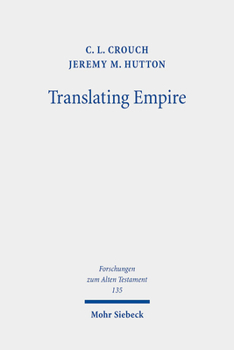Translating Empire: Tell Fekheriyeh, Deuteronomy, and the Akkadian Treaty Tradition
In this volume, C. L. Crouch and Jeremy M. Hutton offer a data-driven approach to translation practice in the Iron Age. The authors build on and reinforce Crouch's conclusions in her former work about Deuteronomy and the Akkadian treaty tradition, employing Hutton's "Optimal Translation" theory to analyze the Akkadian-Aramaic bilingual inscription from Tell Fekheriyeh. The authors argue that the inscription exhibits an isomorphic style of translation and only the occasional use of dynamic replacement sets. They apply these findings to other proposed instances of Iron Age translation from Akkadian into dialects of Northwest Semitic, including the relationship between Deuteronomy and the Succession Treaty of Esarhaddon and the relationship between the treaty of Assur-nerari V with Mati?ilu and the Sefire treaties. The authors then argue that the lexical and syntactic changes in these cases diverge so significantly from the model established by Tell Fekheriyeh as to exclude the possibility that these treaties constitute translational relationships.
Format:Hardcover
Language:English
ISBN:3161590260
ISBN13:9783161590269
Release Date:November 2019
Publisher:Mohr Siebeck
Length:357 Pages
Weight:1.55 lbs.
Dimensions:1.1" x 6.6" x 9.8"
Customer Reviews
0 rating





